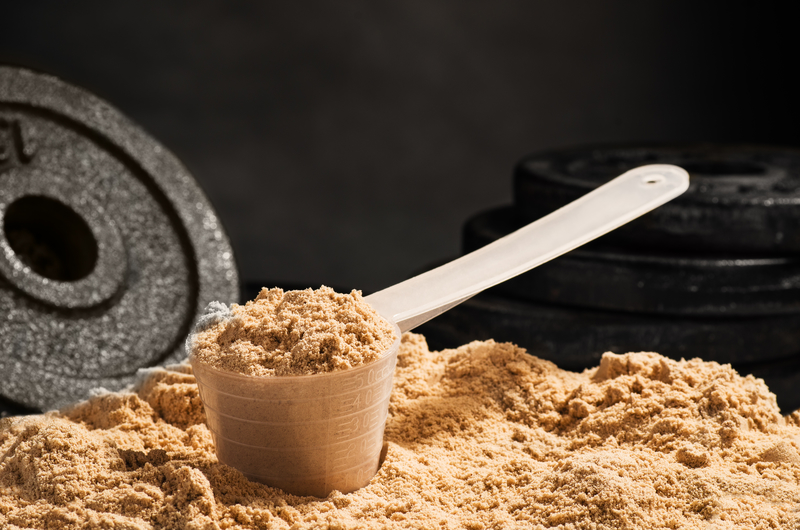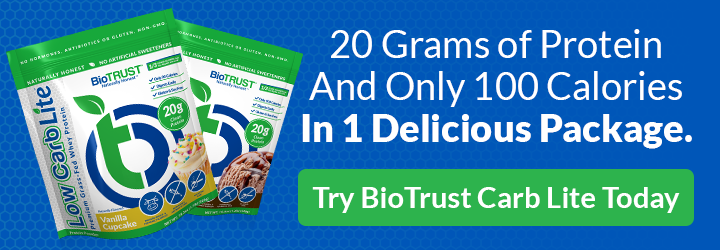Whey or Casein Protein: Which is Better For Your Health?

Protein, protein, protein. There are so many choices available—from fish and chicken to beef and bison to various plant-based options to, of course, protein powders. And that’s good news as there are so many benefits of a high-protein diet.
While hemp, soy, pea, rice, and other protein powders are available, two of the most well-known and well-studied protein powders include the two derived from milk: whey or casein protein. Now, just because they both come from milk doesn’t necessarily make them interchangeable.
Which one is right for you—whey or casein protein?
What are the Benefits of a High-Protein Diet?
Proteins provide amino acids, which are the “building blocks of life.” Our bodies use these amino acids to build and repair tissue, such as skin and muscle. And they also serve as the building blocks for bodily proteins that function as enzymes, hormones, antibodies, neurotransmitters, and transportation chemicals.
The benefits of a high-protein diet include:
- Better health
- Increased calorie-burning muscle mass
- Greater strength
- Less body fat
- Enhanced performance
- Improved metabolic function and rate.
Higher protein intakes also increase satiety, which can help control cravings, reduce caloric intake, and improve diet quality.
While a number of different factors affect how much protein we need, a recent systematic review and meta-analysis shows a good protein target for those who exercise regularly (like you, right?) is right around .73 grams per pound of bodyweight per day (or between .6 – 1 gram per pound per day). 1
The Benefit of Milk-Derived Proteins
You may not remember the last time you had a big glass of milk—as consumption of milk has been decreasing—but if you do, you probably didn’t break it down to think about what types of protein you were consuming. 2 The protein in milk is 20% whey protein and 80% casein protein.
Whey protein comes from the liquid created during the cheese-making process, which can then be dried and made into the whey protein powder you’re likely familiar with. Casein comes from the curds, which can also be washed and dried to create a protein powder.
With a few notable exceptions (calcium!), whey or casein protein are quite similar in their big-picture nutritional breakdown:
Whey Protein Nutrition Facts:
- Calories: 110
- Fat: 1g
- Carbs: 2g
- Protein: 24g
- Iron: 0% of RDI
- Calcium: 8% of RDI
Casein Protein Nutrition Facts:
- Calories: 120
- Fat: 1g
- Carbs: 4g
- Protein: 24g
- Iron: 4% of RDI
- Calcium: 50% of RDI
Both are high-quality proteins and provide all the essential amino acids. They’re both highly bioavailable and easy to digest. However, whey protein is higher in the BCAAs (branched-chain amino acids) leucine, isoleucine, and valine, vital for building and repairing muscle. Casein, on the other hand, provides more histidine, methionine, and phenylalanine.
Whey Protein: The King of Proteins?
Whey protein is one of the most well-known and popular dietary supplements. A quality whey protein like Platinum 1 is not only a convenient way to increase how much protein is in your diet, but it’s also a delicious way to support your active lifestyle. Whey is typically regarded as “fast” protein because it is rapidly digested and absorbed.
In addition to the BCAAs mentioned above, whey also provides major peptides like beta-lactoglobulin, alpha-lactalbumin, serum albumin, immunoglobulin, and lactoferrin, which have antioxidant properties and support the immune system. Whey protein has also been shown in research to help control appetite, regulate blood sugar, improve immune function, and enhance muscle growth and strength. 3
Casein Protein: The Other Milk Protein
While whey protein is the most-touted milk protein, the benefits of casein protein should not be overlooked. Twenty to 40 grams of casein protein, which is regarded a “slow-digesting” protein, are often recommended to be consumed about 30 minutes before bed to help improve recovery after exercise 4 and slow protein breakdown, which can ultimately protect muscles and help improve muscle size and strength. In addition, research has found that consuming protein before bed can increase your metabolism into the next day. 5
Good sources of casein include Greek yogurt, cottage cheese, eggs, or a milk-based protein supplement that contains micellar casein, such as BioTrust Low Carb, which combines the best of both worlds (i.e., whey and casein).
Whey or Casein Protein: When to Use Them?
How fast each of these proteins is digested is perhaps one of the biggest differences between whey or casein protein. Whey proteins, which are acid soluble, digest rapidly. On the other hand, because casein is acid insoluble, it clots in the stomach where it forms globs of protein that empty from the stomach more slowly. Thus, casein is much more gradually digested.
Because whey protein is digested rapidly (in only about 20 minutes) and has been shown to spike levels of blood amino acids, typical recommendations suggest using 20 to 25 grams of whey protein within an hour of your workout—before, during, or after—to help kickstart the muscle-building process (i.e., muscle protein synthesis).
Casein, considered more of a muscle-sparing protein, helps minimize muscle protein breakdown by providing amino acids over a longer period of time, which is why it’s such a good protein to consume before bed (either alone or combined with whey protein) or before a fast. Both of these proteins work well together to help you build muscle. 6 After all, building muscle (i.e., net protein balance) is a combination of maximizing muscle protein synthesis and minimizing muscle protein breakdown.
Mixing a protein powder that contains micellar casein with Greek yogurt to create a protein pudding is a perfect bedtime snack.
Whey or Casein Protein: Wrap Up
Which protein should you use? Research has found that both whey or casein protein result in similar increases in net protein balance in muscle. 7 So, which protein you choose is based more protein timing (e.g., around a workout vs. before bed). So, why not use both? After all, what’s most important is ensuring you are getting enough protein to support your active lifestyle.






